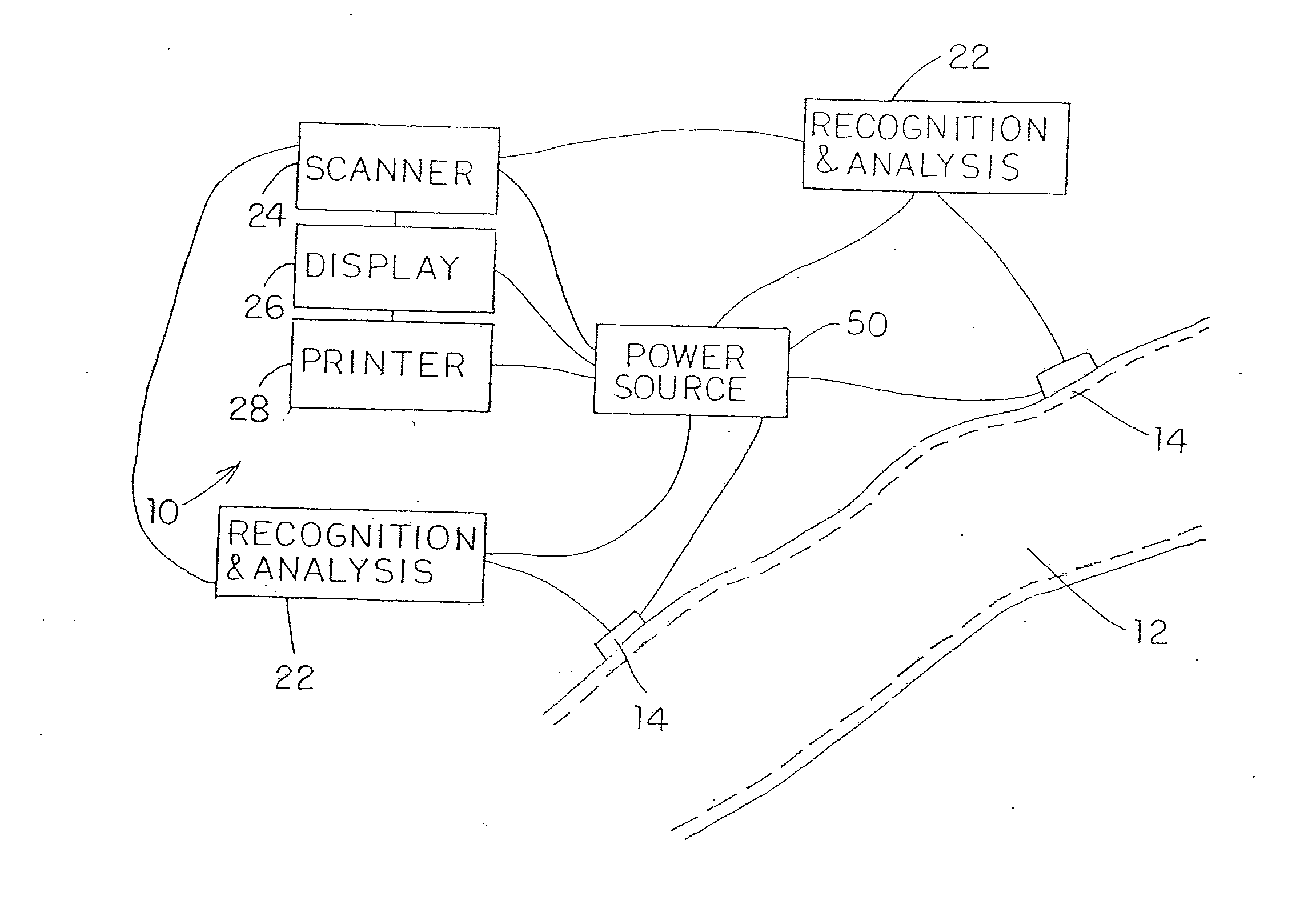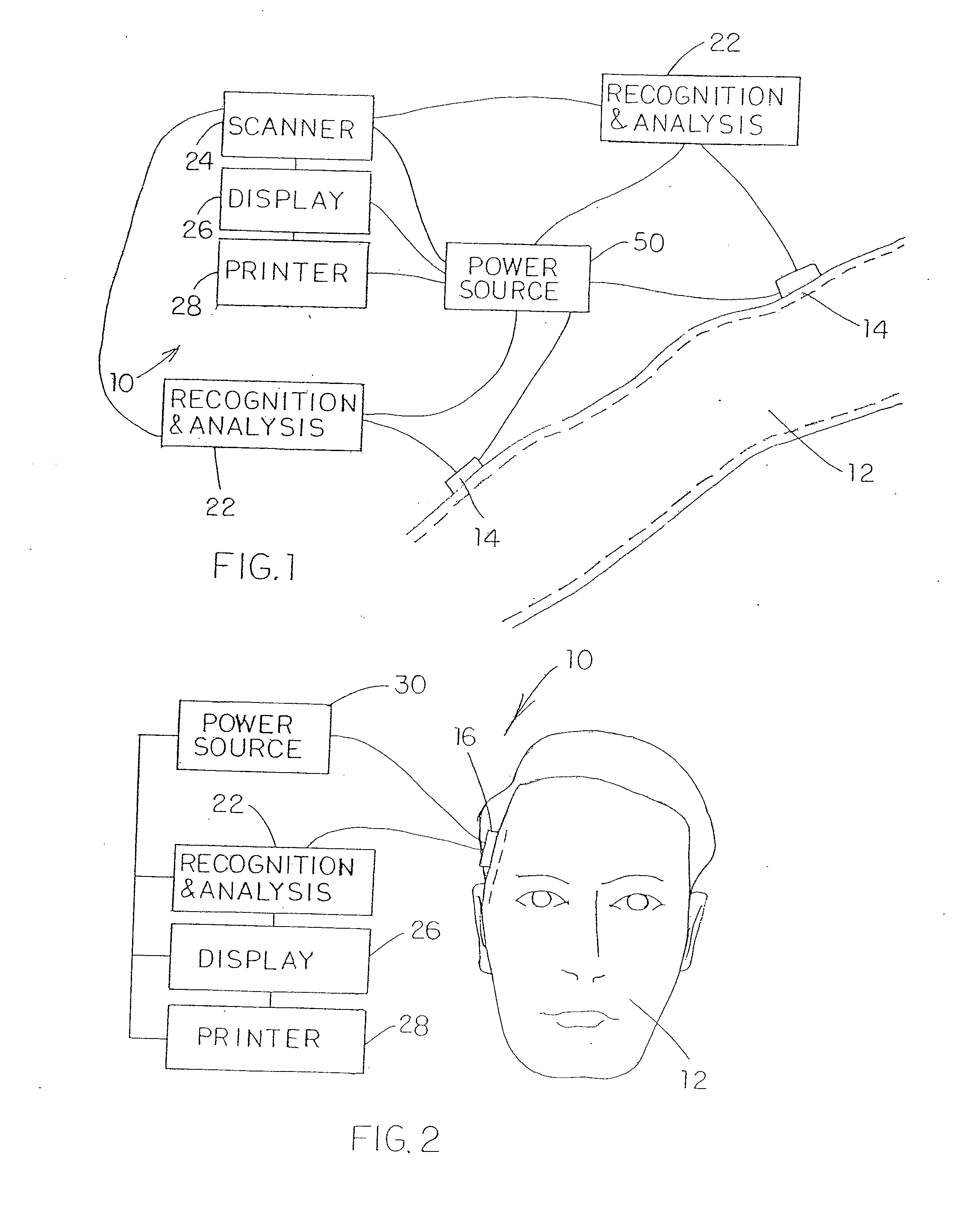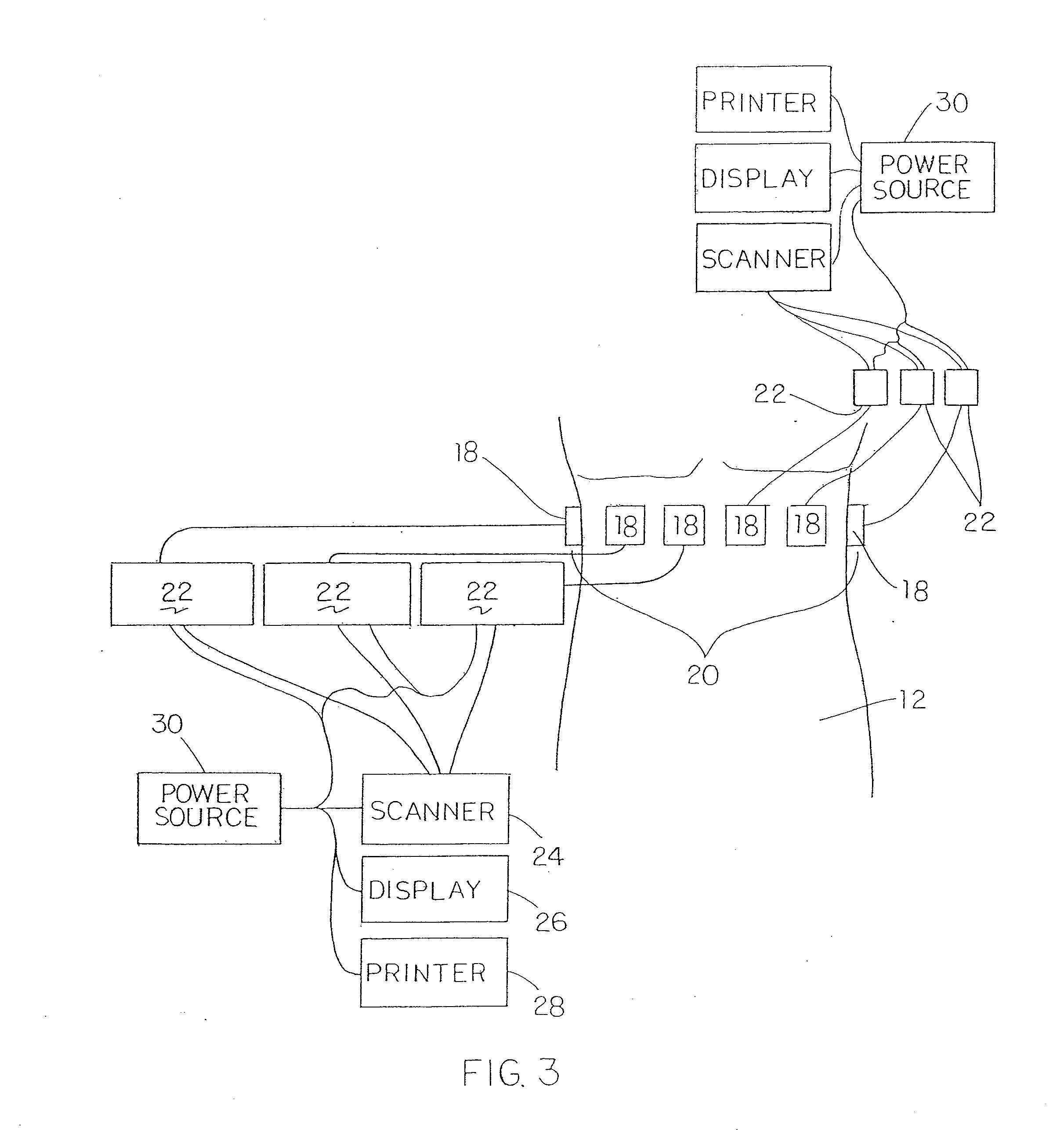Method of measuring total vascular hemoglobin mass
a total vascular hemoglobin and hemoglobin technology, applied in the field of total vascular hemoglobin mass measurement, can solve the problems of consuming valuable emergency staff time, not alleviating the central problem of lack of real time information, and frequent phlebotomy, so as to improve the turn-around time, laboratory techniques, and save valuable emergency staff tim
- Summary
- Abstract
- Description
- Claims
- Application Information
AI Technical Summary
Benefits of technology
Problems solved by technology
Method used
Image
Examples
Embodiment Construction
[0021]The new and improved noninvasive vital sign measurement device 10 of the invention is a medical device for supplying vital sign measurements for any purpose and in any setting where such information is useful to medical clinicians conducting physical examinations or monitoring patients (inpatient, outpatient, or ambulatory), whether in well-equipped hospitals, clinics, or on a battlefield. The invention would allow the monitoring of vital signs continuously. In the vascular application of the device, vital signs that can be measured would include arterial and venous blood pressure and pulse, blood flow velocity, and blood density. Peripheral vascular resistance could be calculated and displayed using data from the device. More conventional equipment could be mated with the device in order to continuously monitor such things as temperature and oxygen saturation. Other potentially measurable pressure parameters could include the extravascular space, intracranial space, intrathor...
PUM
 Login to View More
Login to View More Abstract
Description
Claims
Application Information
 Login to View More
Login to View More - R&D
- Intellectual Property
- Life Sciences
- Materials
- Tech Scout
- Unparalleled Data Quality
- Higher Quality Content
- 60% Fewer Hallucinations
Browse by: Latest US Patents, China's latest patents, Technical Efficacy Thesaurus, Application Domain, Technology Topic, Popular Technical Reports.
© 2025 PatSnap. All rights reserved.Legal|Privacy policy|Modern Slavery Act Transparency Statement|Sitemap|About US| Contact US: help@patsnap.com



